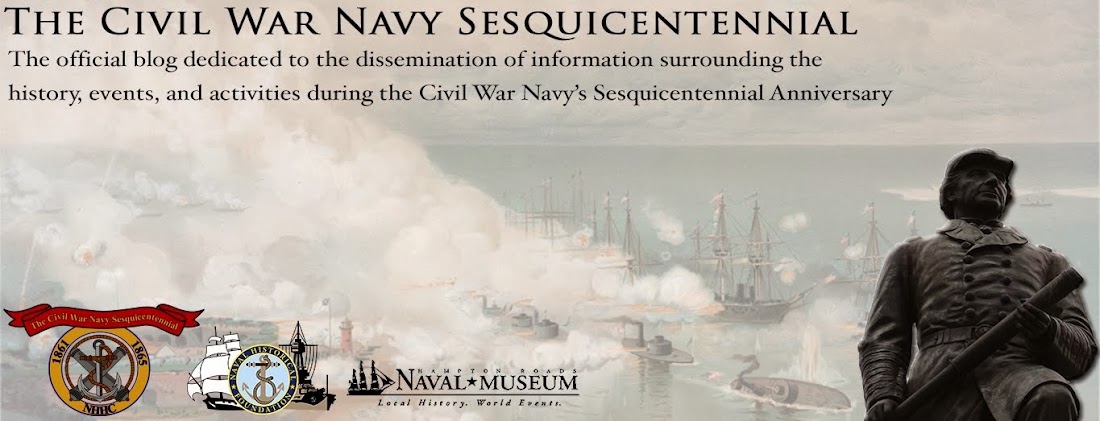Sketch of the configuration of the Confederate Battery on St. Johns Bluff following capture. From the "Official Records of the Union and Confederate Navies" on-line at Cornell University.
As a result of the naval actions of 11 and 17 September 1862, the Union leadership in the region decided it would take a combined Army/Navy amphibious operation to conquer the battery on St. Johns Bluff. US Gen. John M. Brannan was dispatched from Hilton Head, SC with a force of infantry, cavalry and light artillery, about 1,500 men in total. The expedition departed on 25 September. The gunboats USS Paul Jones, Cimarron, Uncas, E. B. Hale and Water Witch rendezvoused with the transports carrying Brannan’s forces at the mouth of the St. Johns River on 1 October. They proceeded upriver to Pablo and Mt. Pleasant Creeks, where they began landing the troops, backed by US Marines armed with Dahlgren 12 pdr boat howitzers.
On 2 October, concurrent with the developing Army assault on the Bluff fortifications, Cdr. Charles Steedman (Sr. Navy officer in charge of the gunboat flotilla) ordered Cdr. Maxwell Woodhull, to take his gunboat, the Cimarron, accompanied by the Water Witch and Uncas, to conduct a reconnaissance of the Bluff. The battery fired on the Union ships as they passed the mouth of Sisters Creek, the gunboats returning fire. The firing from the battery was well aimed, and the Cimarron found it difficult to maneuver due to a combination of strong tidal currents, wind, and the poor handling characteristics of the ship. All of these made it difficult for Woodhull to bring his guns to bear on the battery. Both Cimarron and Water Witch ran aground, during which times they continued to receive fire from the battery. The fight continued for about an hour and a half, after which the three ships received a signal to return downriver and help cover the troop landing. No casualties were suffered on any of the three Union ships, to Cdr. Woodhull’s relief and astonishment.
The Army forces were all landed by 3 October, and the soldiers pushed west towards St. Johns Bluff. As they approached, no flag was seen flying over the battery. Although this suggested the works had been abandoned, Steedman was skeptical, since no flag was flying the day before, when the battery fired on three of his gunboats. In consultation with Gen. Brannan, Steedman sent the Hale and Uncas upriver to conduct another reconnaissance. Approaching the battery, Acting Master Alfred T. Snell of the Hale ordered his guns to open fire, but received no return fire. He dispatched an armed shore party in the ship’s gig to the battery, where they found that the Confederate garrison had evacuated the works. Snell ordered the US flag raised over the fortification on 3 October 1862. The Confederate battery upriver at Yellow Bluff was also evacuated on or about this date.
An account of the St. Johns Bluff events in the fall of 1862 (which these posts are excerpted from) is in an article by me on the Navy and Marine Living History web site at: http://www.navyandmarine.org/ondeck/1862StJohnsBluff.htm.


No comments:
Post a Comment